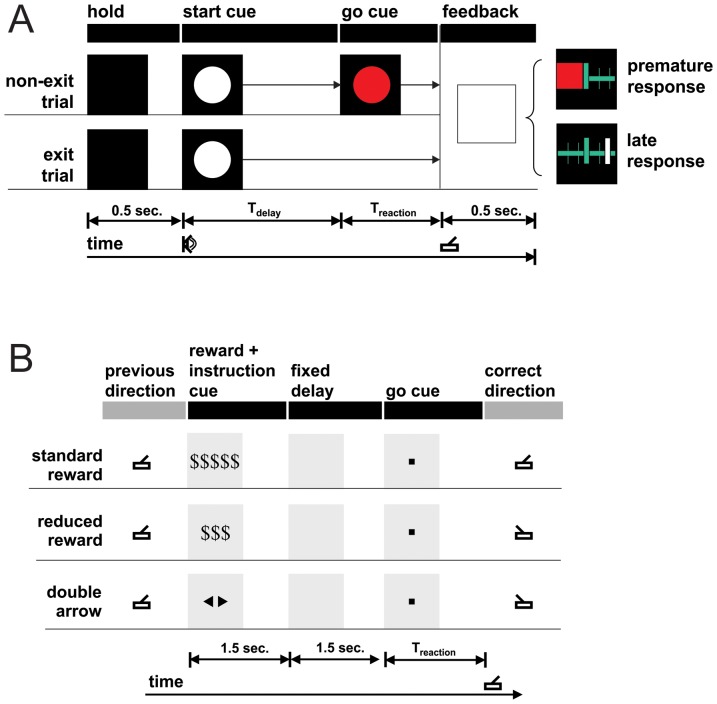Figure 3. Tasks.
(A) The simple reaction time task presents trials with (non-exit) and without (exit) go cues. The delay period (Tdelay) and trial type are randomized to discourage anticipatory strategy. A feedback period indicates to the patient whether their movement preceded the go cue (premature response), or followed the go cue (late response). The thick green tick mark indicates the time of the go cue. The thin green tick marks indicate 10 millisecond intervals on a time axis (medium horizontal green line). The large red square is an icon representing premature response. The white tick mark indicates the reaction time relative to the go cue, provided with late responses. (B) The reward-dependent decision making task includes components of action selection and action initiation. The reward+instruction cue indicates the reward schedule and prompts the user to decide left versus right joystick movement. The go cue prompts the user to initiate movement. The pictures under “reward+instruction cue” and “go cue” are the exact icons presented to the patient. See article text for full description of the two tasks.

